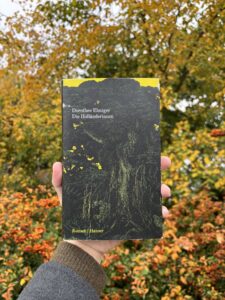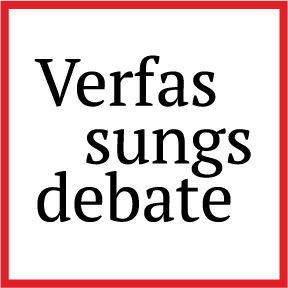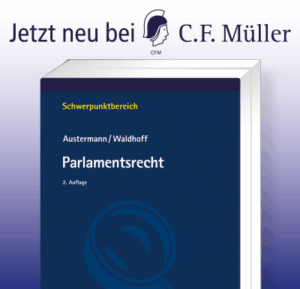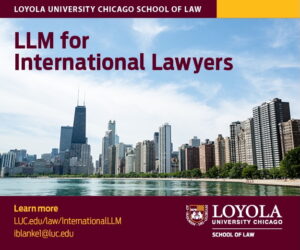“A Violation of the Right of Peoples to Self-Determination”
Five Questions to Jochen von Bernstorff
Roughly a week ago, Hamas and Israel agreed on the first phase of the U.S. peace plan. The fighting ceased, hostages were released, and prisoners set free. Now, however, Israel is threatening to resume hostilities if Hamas does not abide by the ceasefire and hand over all the remains of the deceased hostages. The 20-point plan is far-reaching, covering humanitarian aid, security issues, administration and even “self-determination”. But how robust is this agreement in light of international law – and what can it realistically achieve in such an unequal conflict?
We put these questions to Jochen von Bernstorff, Professor of Public International Law and Human Rights at the University of Tübingen.
1. Peace plan, ceasefire and peace treaty – we’re now hearing these terms a lot in public debate. Could you explain what they actually mean under international law, and how they differ?
A peace plan can take the form of an international treaty, but it does not have to. President Trump’s 20-point plan in his published version is not formulated as a legally binding treaty under international law, but merely as a political proposal by the U.S. President, initially endorsed by Israel’s Prime Minister Netanyahu and later supported by other state representatives. Whether or not binding agreements referring to the 20-point plan between the U.S. administration and other states have been concluded is unclear. Even partial assent by individual Palestinian figures – given under at least the implicit threat of extreme force – does not transform the plan as such into a treaty.
Trump’s entire approach has been marked by the absence of legal considerations and a disregard for the rules of international law applicable to the conflict. A peace treaty between Israel and Palestine is, at this point, not envisaged. The ceasefire provided for in the plan is merely a de facto pause in hostilities to enable a prisoner exchange. It does not end the application of the law of occupation in Gaza, nor does it terminate the underlying international armed conflict.
2. If the plan is not legally binding, what exactly have Hamas and Israel agreed upon so far, and how should we understand the contents of the 20-point plan in terms of international law?
To begin with, it must be recognised that under the first stage of the so-called peace plan, the remaining Israeli hostages – those abducted during Hamas’s brutal massacre of Israeli civilians on 7 October 2023 – have now finally been released. In addition, some 1,950 Palestinians, the vast majority of whom had been imprisoned without due process, have also been freed. The ceasefire, at least for the time being, appears to be holding.
Israel’s military response to the attacks of 7 October 2023, initially launched as an act of self-defence, soon took on disproportionate dimensions. It led to the devastation of Palestinian life in Gaza through grave war crimes by Israeli forces – including acts which, given the requisite intent, amounted to genocidal conduct. The fact that the bombings have finally been halted and humanitarian aid is now reaching the Gaza Strip is, in itself, a tremendous and hopefully lasting success of the 20-point plan.
However, behind the conflict lies a legal situation that will inevitably play a role – in whatever form – in any future peace negotiations: Israel’s decades-long occupation of the Palestinian territories is unlawful and, according to the International Court of Justice, must be ended as soon as possible. This includes, in particular, Israel’s continued expansion of settlements in the occupied West Bank. Moreover, a clear two-thirds majority of states have already recognised Palestine as a state.
I share the view of those who consider the new administration of the Gaza Strip envisaged by President Trump’s 20-point plan – should it ever materialise – to constitute a violation of the right of peoples to self-determination, at least as long as no representative Palestinian government has freely given its explicit consent to that part of the plan. Point 19 of the plan does indeed refer to Palestinian self-determination and even to Palestinian statehood, but it deliberately stops short of recognising this as a legal right of the Palestinian people. On closer inspection, what President Trump’s plan recognises in point 19 – almost cynically – is merely the “aspiration” of the Palestinian people to self-determination and statehood.
++++++++++Advertisement++++++++++++
Das Parlamentsrecht formt den Rechtsrahmen für die Abgeordneten, für die (Selbst-)Organisation und die Willensbildung im Deutschen Bundestag. Sein Gegenstand sind u.a. die Rechtsstellung der Abgeordneten, Fraktionen und Gruppen, Selbstorganisation und Organe des Parlaments, seine Handlungsformen und Funktionen wie Gesetzgebung, Regierungskontrolle und Budgetrecht. Die Neuauflage berücksichtigt zahlreiche Rechtsänderungen und neueste Rechtsprechung.
Weitere Infomationen hier.
+++++++++++++++++++++++++++++++
3. If the plan is more about external control rather than genuine self-government, what would Gaza’s political and economic future look like under these conditions?
Under the Trump plan, the second phase would see the establishment of a technocratic Palestinian transitional government, appointed and overseen by a “peace board” chaired by President Trump. This interim government is expected to attract foreign investment to enable an economically defined reconstruction effort, referred to as “New Gaza”. It would not be, however, a UN interim administration. Unlike in Kosovo after 1999 or other cases of UN administration, the United Nations and the Security Council would play no such role in Gaza.
This reflects the Trump administration’s deliberate disregard for all formalised multilateral forums. By placing the transitional government under direct U.S. supervision, the arrangement would resemble what historians have described as “informal imperialism”: a great power installs, through military pressure and in pursuit of geopolitical and economic interests, a so-called client government that – under implicit or explicit threat of force – acts in line with the imperial power’s objectives.
In this case, the element of coercion stems from the continued presence of militarily superior Israeli forces, equipped and supported by the United States, within or along Gaza’s borders. The only thing that sets this plan apart from classic examples of informal imperialism is the striking candour with which the 20-point plan establishes such external control.
According to the plan, the Palestinian Authority – the official Palestinian government, which has lacked effective control in Gaza for years – is to assume responsibility for Gaza only after an unspecified reform process; in practice, once the “peace board” under the U.S. President deems it fit to govern as a (client) authority. The extent of U.S. power over Palestine’s future under the 20-point plan would exceed even that exercised by Britain as League of Nations Mandate power for Palestine in the interwar period.
Historical research on nations under informal external domination in the 19th and 20th centuries shows that such externally imposed arrangements almost invariably produce structurally unstable political and economic conditions. In these systems, the primary beneficiaries are the great power and its client government, not to the broader population of the client state.
++++++++++Advertisement++++++++++++
Transform your career with Loyola Chicago’s top-ranked LLM for International Lawyers, built on the core principles of academic excellence, affordability, and flexibility. Choose from 160+ courses taught by distinguished and engaged faculty, access tailored career support, and gain hands-on experience in the heart of vibrant Chicago, a major legal and financial hub. Loyola’s LLM empowers ambitious lawyers from diverse backgrounds to excel as ethical global leaders.
Curious? Reach out to Insa Blanke, Exec Dir of International LLM and SJD Programs, Loyola University Chicago School of Law.
Further information.
+++++++++++++++++++++++++++++++
4. Trump disregards the structures of international law – but even if he did not, his room for manoeuvre would remain large. After all, there are far fewer international legal rules for the ius post bellum – the law of the post-conflict phase – than for the ius in bello, the law of armed conflict. What role can international law play in this transitional period?
From a legal perspective, despite extensive scholarly debate since the 1990s about the termination of civil wars, there is no distinct body of rules constituting a ius post bellum. This finding applies in particular to international armed conflicts. For the time being, the law of armed conflict (ius in bello) – particularly the law of occupation – continues to apply until the military occupation of Gaza has in fact ended. Human rights law, in any event, remains applicable at all times, except where specific rules of ius in bello take precedence.
This is crucial, because Israel – like any other occupying power – has a range of obligations towards the population of Gaza under both the law of occupation and human rights law. These include providing adequate food, water and medical supplies, and respecting the local legal order, including existing property rights.
All further questions under international law could be settled in a peace treaty between Israel and a representative Palestinian government – such as the renunciation of certain territorial claims, the establishment of security guarantees, or provisions for punishment and amnesties for war crimes committed.
++++++++++Advertisement++++++++++++
Umwelt- und Klimaschutz im Mehrebenensystem – eine Anfrage an das europäische Verfassungsrecht
Angesichts des gegenwärtigen Umbaus und teilweisen Rückbaus von Regelungen zum Umwelt- und Klimaschutz, die zwischen 2019 und 2024 beschlossen wurden, hält das Dimitris-Tsatsos-Institut eine Rückbesinnung auf den konstitutionellen Status von Umwelt- und Klimaschutz im europäischen Mehrebenensystem für angebracht. Im Zentrum des Symposions steht die Frage, ob das europäische Verfassungsrecht dem Gestaltungswillen politischer Mehrheiten auf Unions- und nationaler Ebene Grenzen setzen kann.
28. & 29. November 2025, FernUniversität in Hagen und online über Zoom.
Näheres hier.
+++++++++++++++++++++++++++++++
5. From everything you have described, the peace process is shaped by stark power asymmetries: the United States is directing the reconstruction of Gaza and defining Palestinian “self-determination” while excluding multilateral institutions, and Israel’s occupation continues. Under these circumstances, does Germany bear a special responsibility to help ensure a fairer peace process?
At present, Germany has no role as a neutral mediator, not least because of its own positioning during the conflict. This makes it all the more important for Germany and other medium-sized states to ensure that the main actors do not completely disregard the international legal framework – a framework designed to protect, through the right to self-determination, precisely the weaker party in this conflict.
Despite the compromises that genuine peace settlements inevitably entail, after more than fifty years of Israeli occupation, the right to an independent Palestinian state can no longer be set aside. Yet, if the entire 20-point plan were to be implemented, that right would continue to be ignored for the foreseeable future.
*
Editor’s Pick
by DILLON DAVIS

When does listening end and storytelling begin?
These questions have been on my mind ever since I read Dorothee Elmiger’s new novel. “Die Holländerinnen” (The Dutch Women) is – in essence – a report on a poetry lecture written almost exclusively in indirect speech. The lecturer, an unnamed writer of great renown, however, has to contend that her work is engulfed “in a process of dissolution”. So instead of giving a lecture on poetry, she recounts a trip to the tropics she took about three years ago to participate in a play about two students from the Netherlands that had disappeared in the rainforest. Among the mangroves, her fellow travellers begin to tell her stories of fear, violence and terrifying alienation.
While Elmiger’s book appears to be a jungle of stories and stories within stories, I found something completely different: the untold, a photograph without colours and shapes, an experience that cannot be put into words.
*
This Week on Verfassungsblog
summarised by EVA MARIA BREDLER
Peace is preserved in times of peace, notably through peaceful assembly. That is what makes the right to assemble so fundamental – and a prime target of autocracies around the world. JAN-WERNER MÜLLER (ENG) explains the requirements and the power of physical protest.
Yet it is not only autocrats who threaten the freedom of assembly. Even those who seek to defend democracy can end up harming it. A recent case from Darmstadt illustrates this: the city banned a demonstration on the so-called Brandnacht – the night of 11 to 12 September, when around 12,000 people were killed in Allied air raids in 1944. Although the far-right rally was clearly lawful, the city upheld its ban. WOLFGANG HECKER (GER) examines the democratic costs when local authorities, in the fight against the far right, act against the law.
Germany, meanwhile, is debating a more literal form of “defending democracy” – the return of compulsory military service. The CDU and CSU have proposed that the draft be decided by lottery, while the political left rejects the idea. HUBERTUS BUCHSTEIN (GER) explains why that is the case and under what circumstances drawing lots can in fact be the most rational form of decision-making.
Fortunately, the International Court of Justice does not draw lots. Yet a new approach has nonetheless been criticised as arbitrary: the Court is increasingly deviating from its traditional five-step test for provisional measures and instead selecting only certain elements of it. This “pick-and-choose” method may be convenient, but it also invites arbitrariness and unpredictability, concludes QUAZI OMAR FOYSAL (ENG).
The International Criminal Court faces a very different kind of “pick and choose”: Mali, Burkina Faso and Niger have withdrawn from the Rome Statute, celebrating their exit as an act of sovereign self-determination. In reality, argues DAVIT KHACHATRYAN (ENG), it reflects a drive for impunity by military juntas that seized power by force and now seek to escape accountability.
The United States did something similar back in 2002 – a year before the Iraq War. Today, the architects of that war are reappearing: Condoleezza Rice, John Bolton and Philip Zelikow have been giving advice in Berlin on how to renew US global leadership. MALCOLM JORGENSEN (ENG) warns against rehabilitating the neoconservatives – and argues that they are the last people who should be designing a new security order.
That new order is already revealing new frontlines. Reports suggest that Hungarian intelligence officersoperated within EU institutions while Olivér Várhelyi – now an EU Commissioner – served as Hungary’s Permanent Representative to the EU. The affair poses a fresh challenge for the Union’s institutional self-defence. ALBERTO ALEMANNO (ENG) outlines how the EU can respond.
At home, Hungary is also redrawing its frontlines. A new 2025 Act on the Protection of Local Identity empowers municipalities to decide who may live within their borders. Under the guise of “tradition” and “community values”, this law functions as a pernicious legal mechanism of racial exclusion – particularly targeting Roma communities – as ANGÉLA KÓCZÉ (ENG) explains.
Faced with such legislation, the primacy of EU law can sometimes seem ineffective. That makes it all the more crucial to strengthen it – which is exactly what the CJEU has done by declaring decisions of Poland’s Chamber of Extraordinary Control null and void. The AW ‘T’ ruling, writes BARBARA GRABOWSKA-MOROZ (ENG), will be pivotal for the Polish judiciary and for addressing the wider rule-of-law crisis.
In Turkey, the rule of law crisis is deepening further: Ekrem İmamoğlu, the Mayor of Istanbul, has been imprisoned for 200 days without indictment as the government uses the judiciary to eliminate political opposition. AYŞEGÜL KARS KAYNAR (ENG) shows how the case marks a shift from autocratic legalism to “lawfare” – the strategic use of legal tools to suppress democratic competition.
Questions of power and control are not confined to authoritarian regimes. They also reach into the digital realm. In August, the parents of a 16-year-old boy filed a lawsuit against OpenAI and its CEO after their son took his own life – allegedly influenced by ChatGPT. The case has reignited debate over the psychological risks of AI chatbots for minors. CRISTINA FRATTONE and FEDERICO RUGGERI (ENG) argue that proper design safeguards are urgently needed.
Those in need of protection include refugees – yet too often they are denied it, not only by law but also in its enforcement. Despite clear rulings by the Federal Social Court on access to healthcare, many authorities still require refugees to present “treatment vouchers”, thereby denying them essential medical services. HANNAH FRANKE and SALOMON GEHRING (GER) examine this troubling practice and its consequences.
++++++++++Advertisement++++++++++++
Intellectual Property and the Human Right to a Healthy Environment
Edited by Elena Izyumenko
“This timely volume tackles a new and important topic: how can we harness the intellectual property system to promote the human right to a healthy environment? Featuring scholarship on human rights, intellectual property and environmental law, the book identifies multiple pathways to foster a constructive relationship between these areas to promote environmental sustainability. Highly recommended!”
– Peter K. Yu, Texas A&M University
“This book presents a set of eclectic views centred on the themes of the right to a healthy environment, climate change, clothing upcycling and intellectual property law. The intersection of these legal norms highlights the challenges of reconciling intellectual property law with the human right to a healthy environment.”
– Ian Fry, Australian National University, Former UN Special Rapporteur on the Promotion and Protection of Human Rights in the Context of Climate Change (2022-2023)
Available as soft copy (open access) and in print!
+++++++++++++++++++++++++++++++
This week, we also continued our symposium on “Defund Meat” (ENG): In the context of strategic litigation, LAURA BURGERS warns that activists need to carefully choose between various legal options, mindful that nationalist populists may exploit any ruling. In face of the tension between the welfare paradigm and the fundamental rights approach in animal rights discourse, EINAT ALBIN argues for labour entitlements. CASS SUNSTEIN explains what we could do to nudge meat-free eating. Economists ROMAIN ESPINOSA and NICOLAS TREICH explore whether meat should be taxed to account for its impact on animal welfare and propose an animal welfare levy. KIRSI-MARIA HALONEN argues that carefully designed sectoral legislation on food provision can help promote plant-based meals and reduce meat consumption.
And finally, we’ve kicked off a new symposium as part of the EU-funded FOCUS project: “Mapping Article 13: Academic and Scientific Freedom under the EU Charter” (ENG), co-edited by Vasiliki Kosta and Marie Müller-Elmau. Academic freedom is under pressure. Though protected by Article 13 of the EU Charter, this article has received practically no or very little attention in both scholarship and EU institutional and jurisprudential practice. As legal and political developments accelerate, the meaning of this right is taking shape in real time. VASILIKI KOSTA opens the symposium with the promise that Article 13 of the EU Charter holds for the future. CHRISTINA ANGELOPOULOS argues that Open Access – by encouraging researchers to release copyright openly – forces a principled debate about the scope and purpose of academic freedom itself. KIRSTEN ROBERTS LEYER examines the U.S. administration’s push to link federal funding to an ideologically driven “Compact for Academic Excellence,” draws parallels to the EU, and argues that the EU should safeguard academic freedom as a fundamental right under Article 13 of the EU Charter, not merely as a sectoral concern. KRISZTA KOVÁCS and JULIAN LEONHARD explore the tensions between free speech and academic discourse at universities. ANDRÁS L. PAP offers eight lessons from Hungary’s experience in conceptualising academic freedom. Given that science is moving to the core of national security debates, RAFFAELA KUNZ argues that Article 13 of the EU Charter must also shield academic freedom from the subtler pressures of political control and market capture. ETIENNE HANELT describes how the – internationally little known – Orbán-linked Mathias Corvinus Collegium is gaining ground and challenging academic freedom. STEFAAN VAN DER JEUGHT observes that academic freedom is inseparable from language and thus asks to what degree academic freedom might protect the right to choose one’s language. OLGA CERAN explores a similar subject: as the language of instruction is increasingly contested in European higher education, she analyses how comparative legal insights could shape the interpretation of Article 13 of the EU Charter. In another piece, she criticises that the EU still lacks a systematic approach to academic freedom which includes its democratic dimension.
So take it to the streets and to universities in the name of democratically guaranteed peace – so that it may endure. Alternatively (say, in the event of bad weather): appreciate that you have the freedom to do so.
*
That’s it for this week. Take care and all the best!
Yours,
the Verfassungsblog Team
If you would like to receive the weekly editorial as an e-mail, you can subscribe here.







